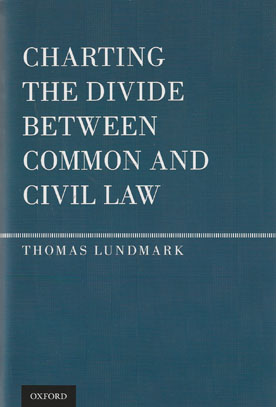
What does it mean when civil lawyers and common lawyers think differently? In Charting the Divide between Common and Civil Law, Thomas Lundmark provides a comprehensive introduction to the uses, purposes, and approaches to studying civil and common law in a comparative legal framework.
Superbly organized and exhaustively written, this volume covers the jurisdictions of Germany, Sweden, England and Wales, and the United States, and includes a discussion of each country's legal issues, structure, and their general rules. Professor Lundmark also explores the discipline of comparative legal studies, rectifying many of the misconceptions and prejudices that cloud our understanding of the divide between the common law and civil law traditions.
Students of international law, comparative law, social philosophy, and legal theory will find this volume a valuable introduction to common and civil law. Lawyers, judges, political scientists, historians, and philosophers will also find this book valuable as a source of reference. Charting the Divide between Common and Civil Law equips readers with the background and tools to think critically about different legal systems and evaluate their future direction.